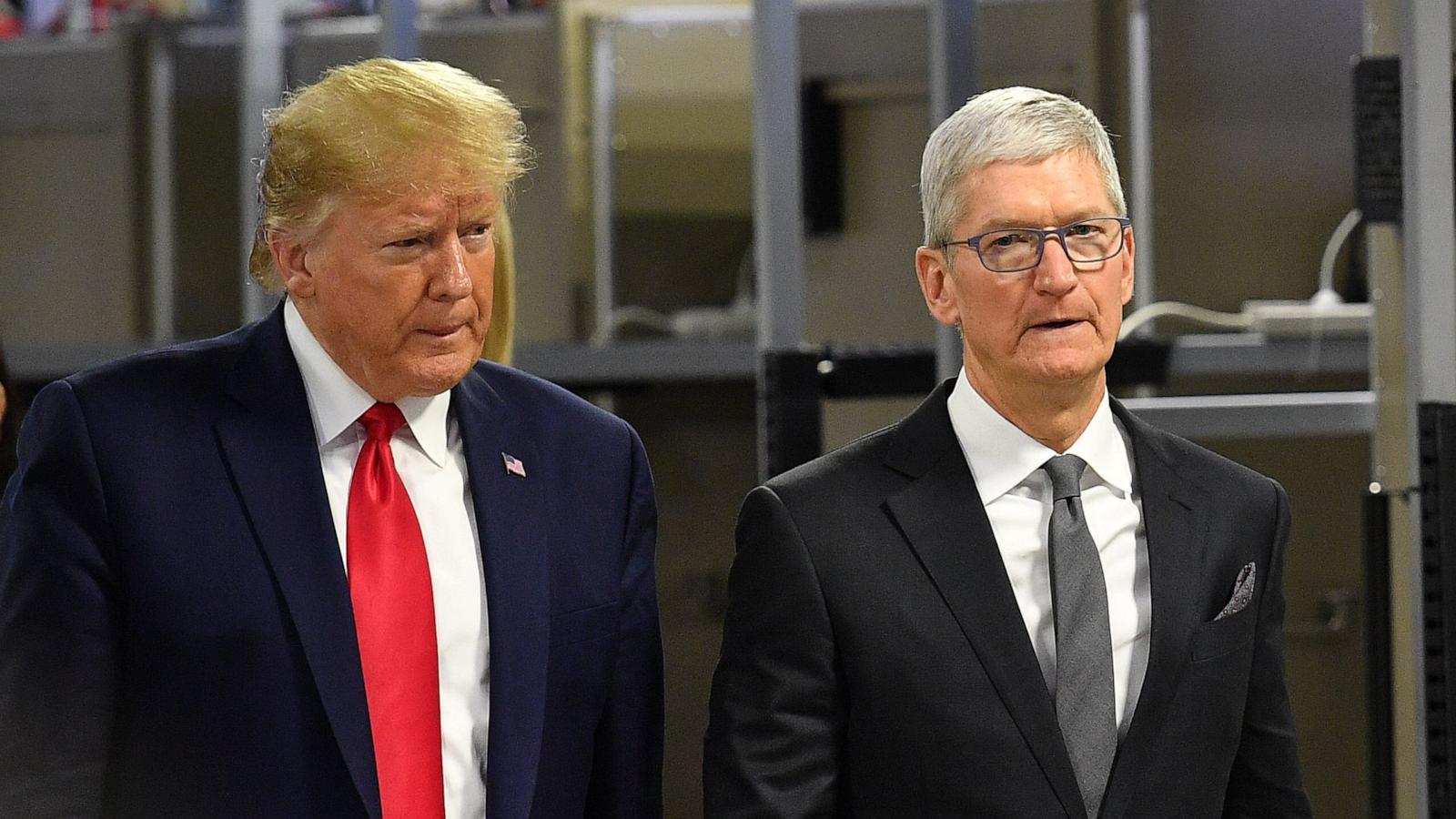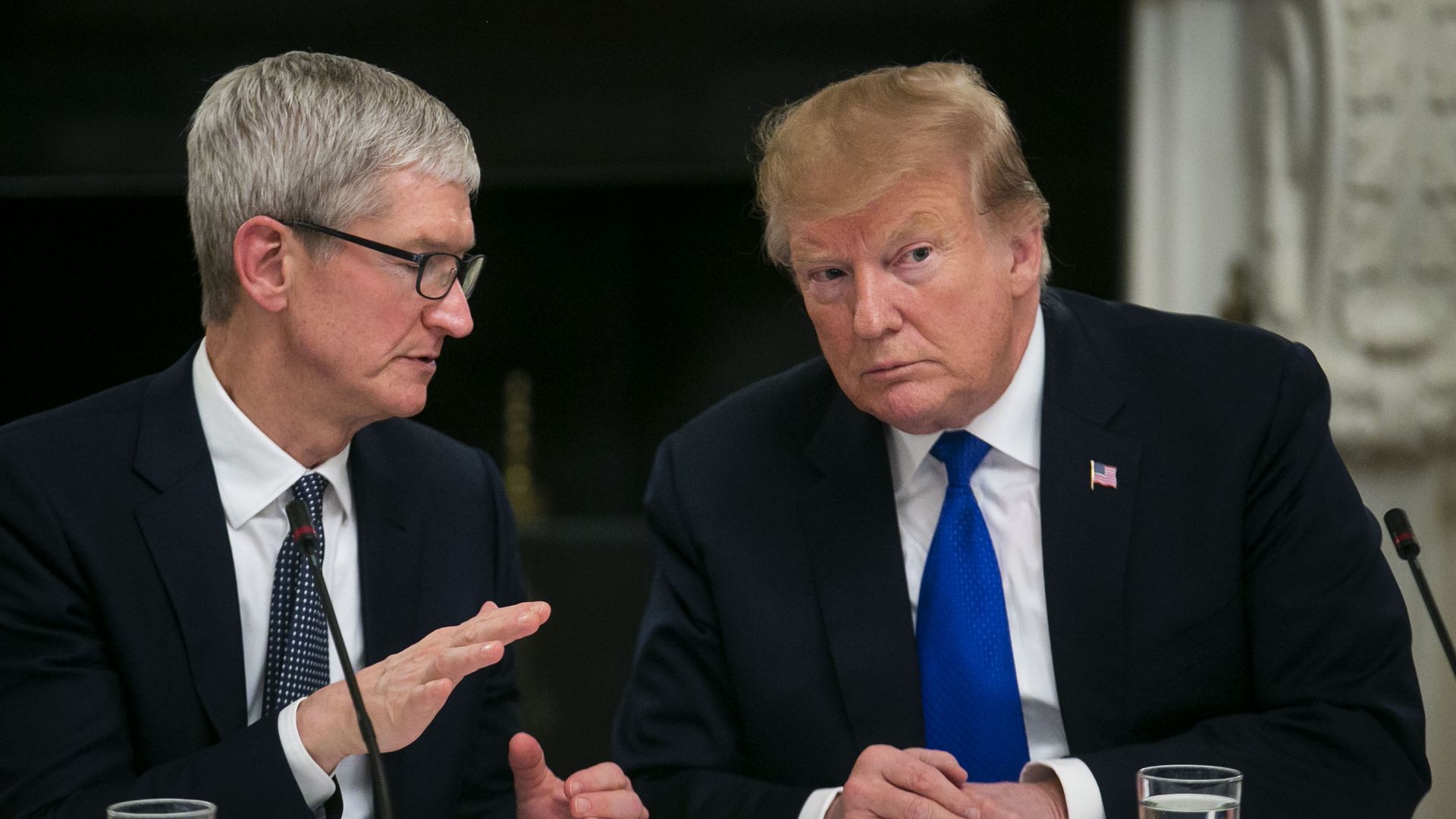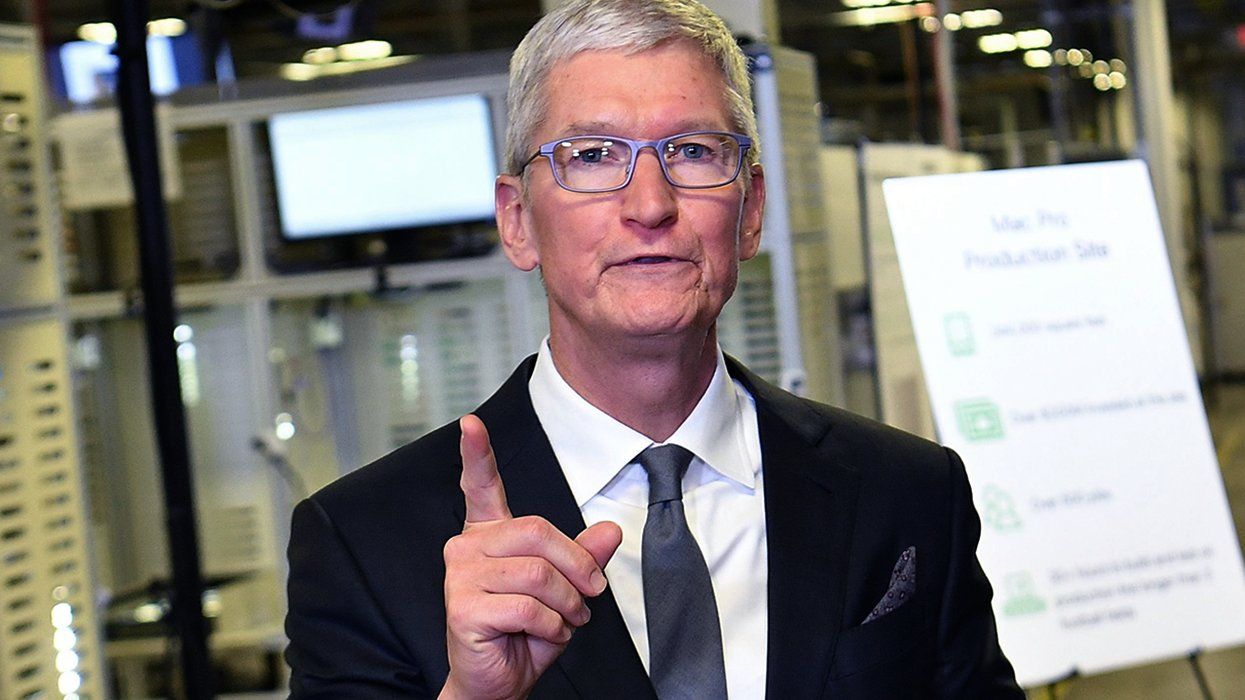
President Donald Trump has reignited tensions with Apple CEO Tim Cook, threatening to impose a sweeping 25% tariff on Apple products if the company does not relocate its iPhone manufacturing operations to the United States. The warning, issued through a Truth Social post on Friday, underscores the growing political friction between the White House and one of America’s most iconic technology firms as the global tech supply chain continues to undergo profound realignments.
“I have long ago informed Tim Cook of Apple that I expect their iPhones that will be sold in the United States of America will be manufactured and built in the United States, not India, or anyplace else,” Trump wrote. “If that is not the case, a tariff of at least 25% must be paid by Apple to the U.S.”
This public declaration follows weeks of mounting pressure on Apple’s international manufacturing plans. The trillion-dollar tech giant is currently executing one of its most ambitious supply chain overhauls in company history. Apple intends to shift the entirety of its iPhone assembly for the U.S. market—estimated at over 60 million units annually—from China to India by 2026.

This move is not a matter of convenience or cost-cutting but a calculated strategic response to the trade war ignited under Trump’s leadership, which has made Apple’s dependence on China increasingly untenable.
For nearly two decades, China served as the nucleus of Apple’s hardware production, offering unmatched infrastructure, scalability, and workforce specialization. But as Trump’s administration imposed harsh tariffs on Chinese goods and reshaped the rules of global commerce, Apple began accelerating plans to diversify.
India, with strong government incentives, a rapidly developing industrial base, and growing diplomatic alignment with the West, emerged as the most viable alternative. The shift is a clear hedge against both current and future geopolitical risks tied to China.
Apple’s move to India is also deeply intertwined with its long-term global strategy. Beyond simply avoiding tariffs, the transition allows Apple to establish a more geographically balanced manufacturing network, reduce its vulnerability to regional disruptions, and strengthen its position in emerging markets.

The company has committed to expanding its Indian production capabilities in phases, with the goal of fully assembling all iPhones destined for U.S. consumers in India by the end of 2026. This effort includes deepened partnerships with suppliers like Foxconn and Wistron, as well as support from the Indian government under its “Make in India” initiative.
Trump, however, is not convinced. During a recent press conference, he reiterated his dissatisfaction with Apple’s global expansion.
“I said, ‘Tim, look, we treated you really good, we put up with all the plants that you built in China for years, now you’ve got to build us,’” Trump recounted. “We’re not interested in you building in India. India can take care of themselves ... we want you to build here.”
The president’s comments make clear that he views Apple’s India strategy as a betrayal of American manufacturing potential, despite the company’s previously announced $500 billion investment in the United States. That package includes a new factory in Texas and expanded training facilities for domestic workers, but in Trump’s eyes, it is still insufficient if iPhones are not physically produced on American soil.

The practical challenge of Trump’s demand is immense. Building a full-scale iPhone manufacturing system in the U.S. would require years of development and billions of dollars in infrastructure. Apple’s current supply chain is a hyper-efficient, continent-spanning network involving hundreds of specialized suppliers—many of whom are not located in the U.S.
Recreating this ecosystem stateside would face insurmountable labor, component sourcing, and cost barriers. Analysts estimate that a U.S.-made iPhone could cost between $3,000 to $5,000 for consumers—if it could even be produced at all with existing domestic capabilities.
Still, Trump remains undeterred. The 25% tariff threat appears to be his way of forcing Apple’s hand, punishing the company unless it realigns its global priorities to match his nationalist vision. But critics argue that such a policy could backfire.
A tariff of that magnitude could significantly disrupt Apple’s U.S. sales, inflate prices for consumers, damage the company’s stock value, and trigger a retaliatory spiral with international trading partners.
Apple has not yet commented on Trump’s latest ultimatum. However, insiders suggest the company is deeply concerned about the political climate surrounding U.S. manufacturing and is weighing its options carefully.

While Apple’s long-term India strategy is already in motion and difficult to reverse, the company may explore other ways to boost its U.S. profile in the near term—possibly by announcing new job-creating initiatives or expanding domestic R&D operations.
This isn’t the first time Trump has publicly clashed with Cook. Previous disagreements have centered on trade, taxes, encryption, and privacy. But this new chapter marks a significant escalation because it attacks the heart of Apple’s operational model. Manufacturing is not just a logistical choice—it’s a strategic foundation for how Apple scales, innovates, and delivers globally. Undoing that would be tantamount to asking the company to rebuild itself from the ground up.
From a market perspective, the uncertainty is dangerous. Apple is one of the largest publicly traded companies in the world, and any disruption to its supply chain could send shockwaves across Wall Street. Investors will be closely watching whether Trump’s threats materialize into policy or remain political theater.
As of now, no formal tariff action has been taken, but industry watchers warn that rhetoric alone can be enough to spark instability in the tech sector.

Meanwhile, the geopolitical stakes are growing. India, a key U.S. ally in the Indo-Pacific region, has been actively courting companies like Apple to deepen trade ties and shift global manufacturing power away from China. Forcing Apple to abandon or scale back its India ambitions could inadvertently weaken one of America’s most important strategic partnerships.
In the end, the standoff between Trump and Tim Cook reflects a broader clash between national politics and global business logic. Trump’s America-first agenda demands immediate, visible results: factories, jobs, and products stamped “Made in the U.S.A.” Apple’s strategy, in contrast, is built for global efficiency and long-term resilience.
Whether these opposing visions can find common ground remains to be seen.
For now, one thing is certain: Apple’s $500 billion investment at home isn’t enough to quiet Trump’s demands. Until iPhones are assembled in the U.S., the company will continue to walk a fine line between political pressure and operational reality.
-1747623652-q80.webp)
-1747889572-q80.webp)
-1742653910-q80.webp)
-1747904625-q80.webp)